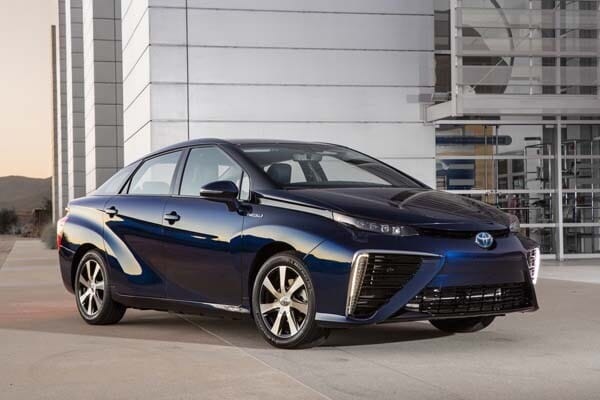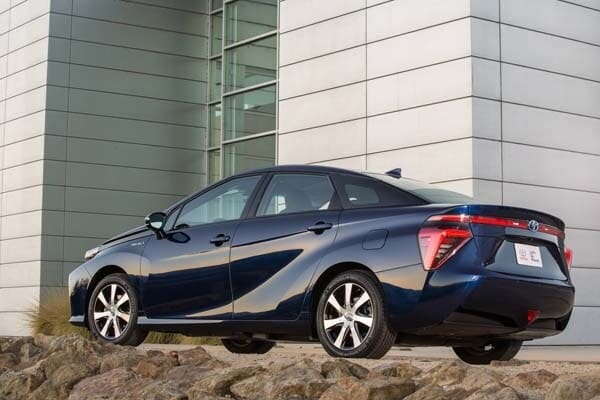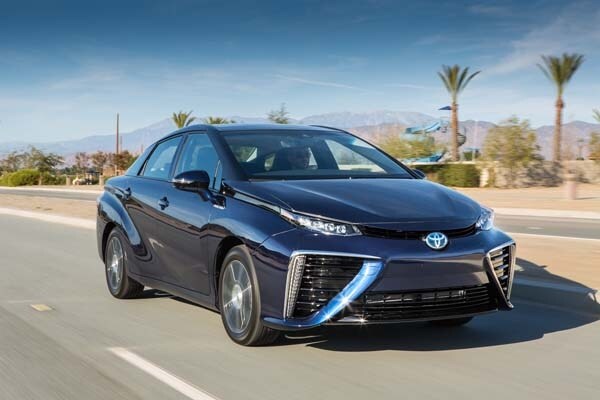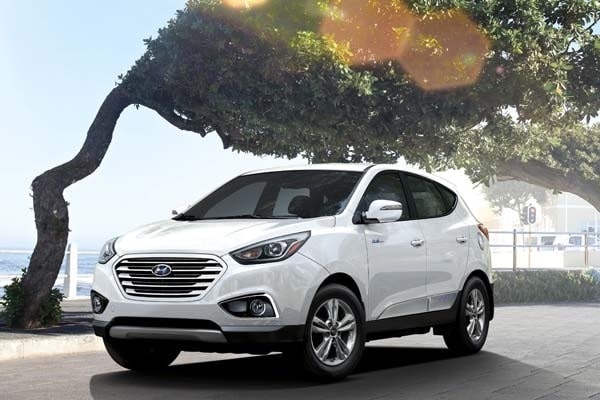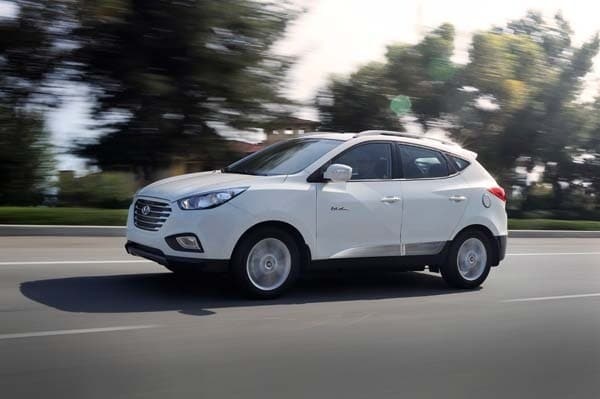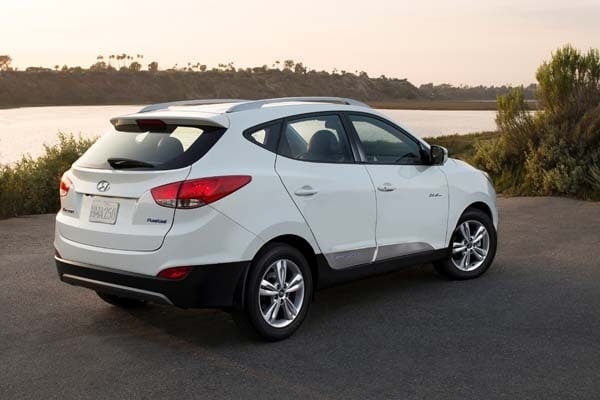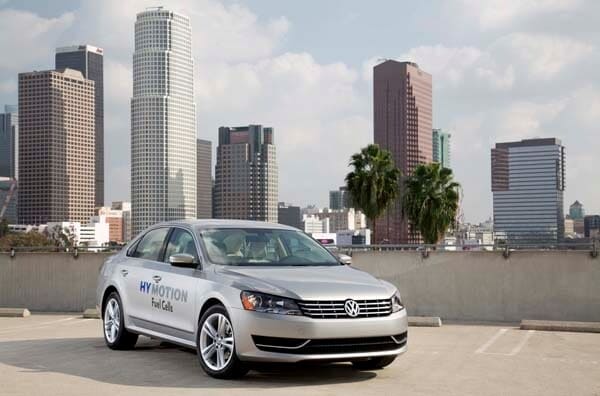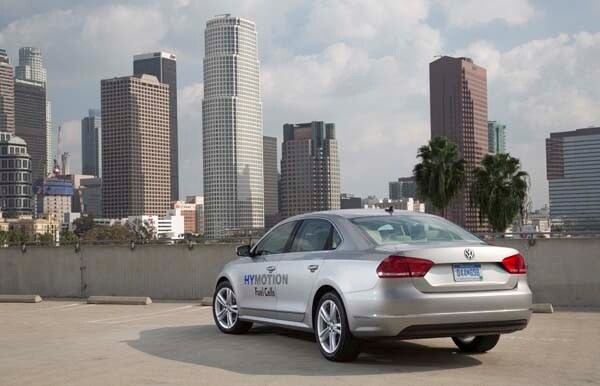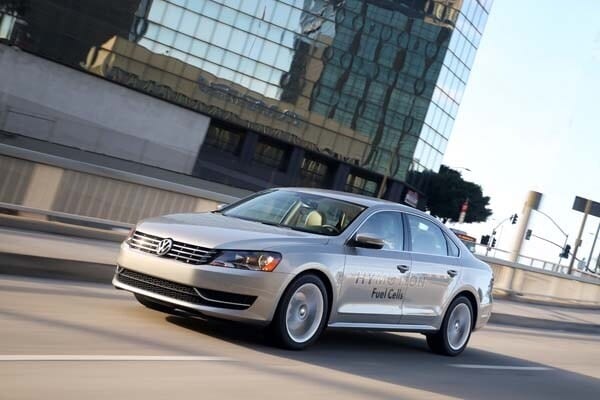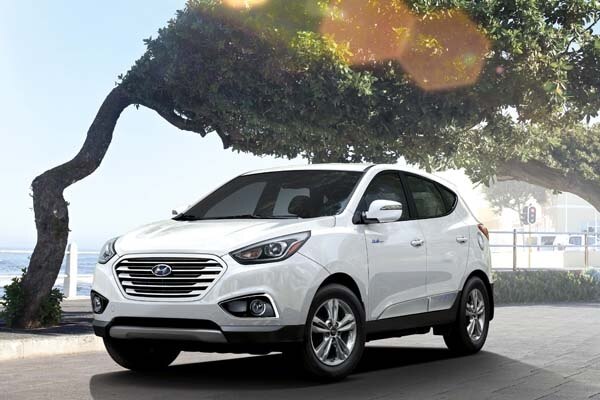There’s a lot to like about hydrogen fuel cell vehicles. They have a range that’s similar to that of gas-powered cars, yet don’t require a drop of gasoline. It’s also relatively easy to scale a fuel-cell system for everything from small cars to large trucks. FCVs are quiet and can have the quick acceleration that electric cars are known for. And in many cases, the tank that holds the compressed hydrogen doesn’t take up a lot of space. Here’s how it works: hydrogen from the tank plus oxygen from the air equals electricity that powers the car. The only exhaust is water vapor leaving the car through the tailpipe.
It is for all of these reasons and more that automakers are interested in bringing fuel cell technology to consumers. Several automakers are working on fuel cell vehicles, but many aren’t ready to bring them to market until there are enough stations where consumers can fill the vehicles. That’s why in many cases FCVs go on sale in regions like California that give zero emission credits and have the start of a hydrogen infrastructure. During the Los Angeles Auto Show, we had the opportunity to drive three fuel cell vehicles, from Toyota, Hyundai and Volkswagen, some of which are closer to market than others.
2016 Toyota Mirai
There are a lot of parallels between when the Prius came to the United States and the upcoming arrival of the Mirai. Nearly 15 years ago, the Prius hybrid came here as an alternative to traditional gas-powered cars. Instead of trying to fit hybrid technology into an existing model, Toyota made the Prius look unlike anything else on the road, encouraging environmentally friendly buyers to make a statement. The Prius was a success, thanks to its fuel economy, ease of use, versatility and price point. In the process hybrids became mainstream vehicles.
Where the Prius was a first step toward reducing reliance on fossil fuels, the Mirai can be seen as the next and more dramatic step. The Mirai, which means "future" in Japanese, is intended to broaden the appeal of fuel cell technology. Like the Prius, the Mirai uses an electric motor and regenerative braking, and its styling is completely unique. Also like the Prius, even though the styling and the drivetrain set it apart, the car is designed for day-to-day use. Driving it is, in many ways, nothing out of the ordinary.
The Mirai is based on a modified version of the Prius v platform. They share the same wheelbase but the Mirai is about 10 inches longer overall–and it’s a sedan, not a hatch like the v. While some of the styling is to make the car as efficient as possible–to draw in a lot of air up front and make it flow smoothly over the car–it was also designed to make sure you can’t mistake it for any other car. Whether or not you like the way it looks, you have to agree that Toyota succeeded in making the car stand out.
The interior is something you would expect to see in a luxury car, not the cabin you would associate with an alternative fuel vehicle. The Mirai’s cushy seats are wrapped in buttery leather. There are soft-touch materials on the dash and doors, and other accents and quality touches that elevate it far beyond econo-car status. Toyota’s Entune infotainment system makes it easy to toggle through navigation and audio options, and there are displays that show data about vehicle range and energy use. It is strange that there are no gauges or displays directly in front of the driver, but this is similar to the setup in the Prius and you get used to it quickly. There’s plenty of legroom and headroom up front, but sitting in the back seats there’s less room in the footwells than in other cars, because of the hydrogen tank location.
Also: The Class of 2015 — New Vehicles Ready to Roll
Starting the car takes a push of a button, and the Mirai’s shifter is much like that of a Prius. Acceleration is EV quick and it doesn’t take long to get up to speed, but power does taper out at higher freeway speeds, though you can call on reserves for passing. The prototype Mirai we drove was very quiet, which allowed the occasional whirring and whooshing in the fuel cell compartment as a compressor pushed air into the stack, as well as some road noise. The transmission was smooth, the steering somewhat heavy. Its brakes had a similar odd non-linear feel as the Prius, but that’s to be expected with regenerative braking. The Mirai provides a comfortable ride, and much like other vehicles in the Toyota lineup, is a pleasant vehicle for daily commutes and highway jaunts.
Aside from the phenomenal seats, the biggest surprise about the Mirai is how finished the prototypes felt. We don’t get the cars in the U.S. until near the end of next year, yet this car feels ready for market now. The Mirai is set to go on sale in December 2014 in Japan, Californians will have to wait until fall 2015 to buy or lease the Mirai. It rolls out to the Northeast in spring 2016. But when it does arrive, you can either buy it for $57,500 before incentives kick in (those could bring the price down to under $45,000) or lease the Mirai for $499 a month for 36 months.
2015 Hyundai Tucson Fuel Cell
Hyundai’s fuel cell vehicle offers the cargo-carrying capability of an SUV. Its range is about 265 miles, with fuel economy of 50 mpg-e. Some fuel cell vehicles like the Mirai use a compressor to bring in more air, which increases the amount of power off the line but can lower the overall range. The Tucson doesn’t use this technology, which is why the range is as good as it is even though it’s bigger and heavier than other fuel cell vehicles. The 134-horsepower Tucson isn’t overly quick, but it easily stays with traffic, and basically drives like a small SUV.
Unlike Toyota, which went to great lengths to make the Mirai look different, Hyundai’s approach is to offer a vehicle with an exterior and interior almost identical to a regular Tucson. The dimensions and capabilities are nearly the same, except that you lose about half an inch of rear-seat legroom and a little bit of cargo volume. Hyundai’s Tucson Fuel Cell is already available for lease, for $2,999 down and $499/month, which includes free fill-ups for the duration of the lease and valet maintenance (Hyundai picks up the vehicle for service and returns it when it’s done).
Volkswagen Passat HyMotion
Of the trio of FCVs we drove, this Passat-based fuel cell vehicle is the furthest from coming to market. Volkswagen said it plans to produce it within the decade, but that it doesn’t make sense to do that until the hydrogen infrastructure is better established. The HyMotion puts out 134 horsepower, but the compressor gives the Passat excellent acceleration off the line. Brakes are a little grabby, but are certainly livable. The Passat is quiet and nicely polished inside; the biggest indicator that this is different from a regular Passat is the energy usage screen in the center stack, which looks a lot like the screen found in the e-Golf.
VW showcased its HyMotion technology on the show stand with a different vehicle, the Golf SportWagen HyMotion, which like the Passat FCV, gets its electric motor and transmission from the e-Golf. Both the Passat and Golf HyMotion models shows that VW is working hard on having a viable, refined fuel cell vehicles to offer the public. The only things missing now are the hydrogen filling stations.
More Hybrid and Alternative Energy news…
2016 Chevrolet Volt teased again
Audi A7 Sportback h tron Quattro Concept revealed in Los Angeles
U.S. sales of the 2014 Mercedes-Benz B-Class Electric have begun
Popular at KBB.com
See the All-New Cars for 2015
10 Coolest Cars Under $18,000
Best Buys of 2015
